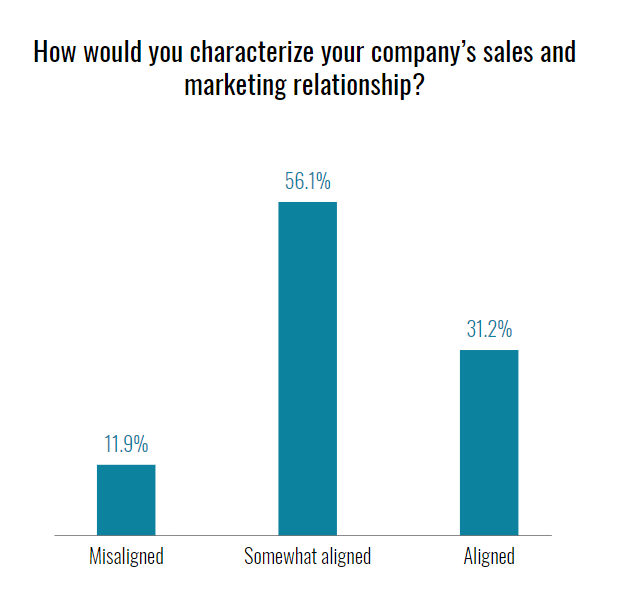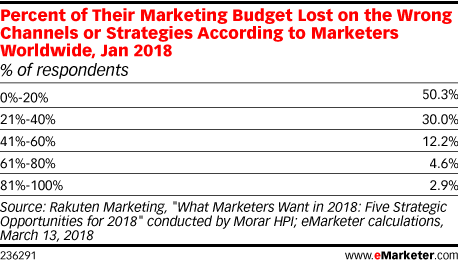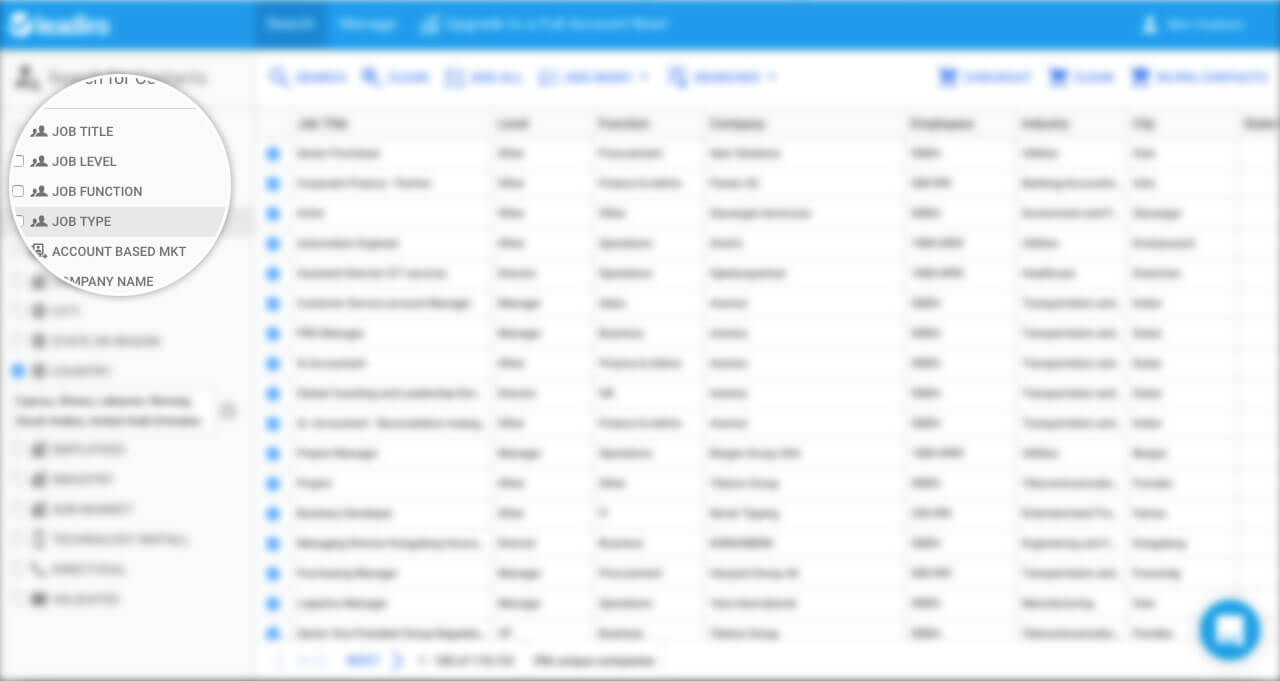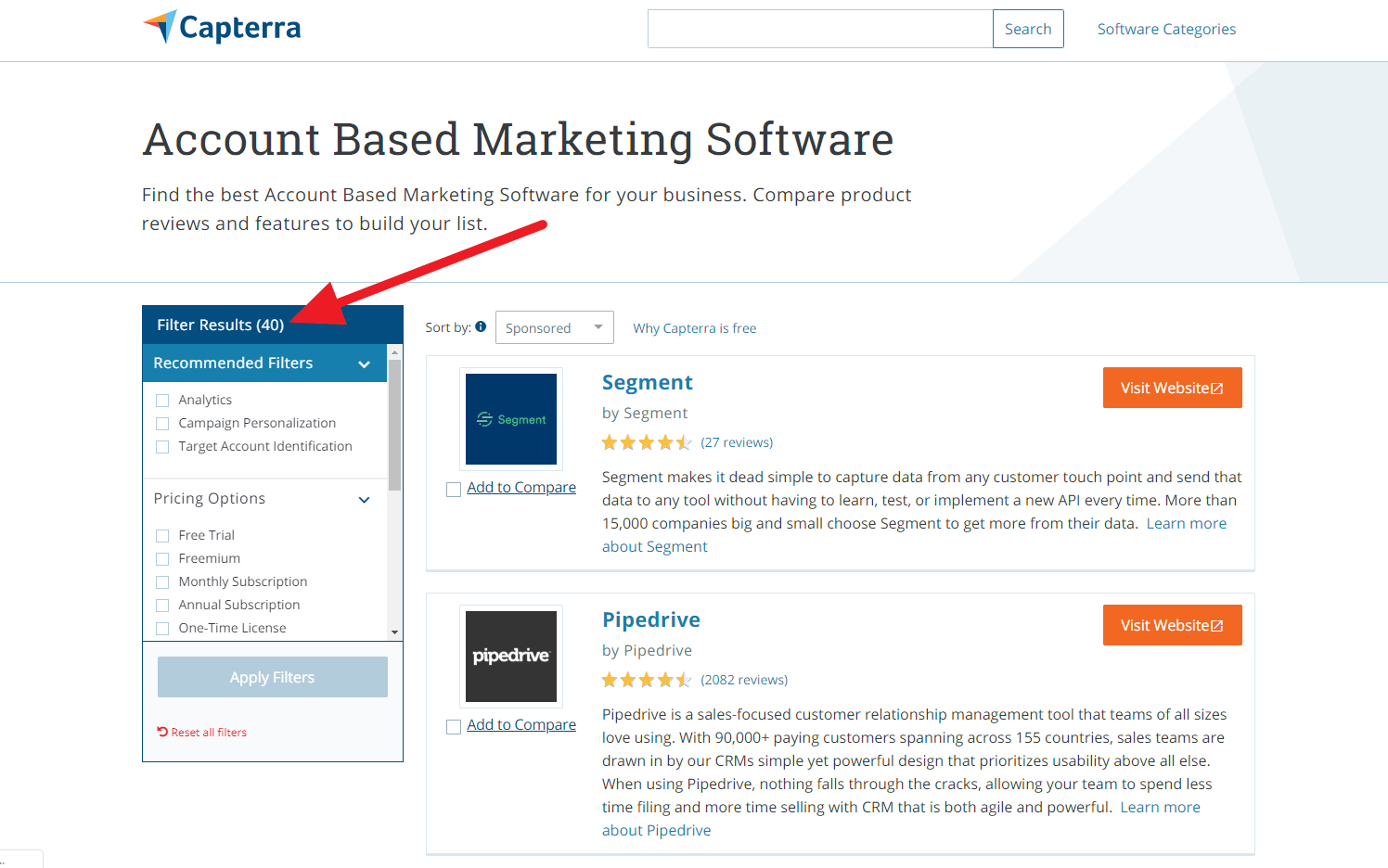
If you don’t have an ABM program in place and aren’t sure how to start running one, you’re in the right place.
We’re going to show you everything you should know about running an ABM program. It is a highly effective way to engage with and close high-value accounts, and in this post we’ll draw on our expertise to show you how you can benefit from it too.
We’ll outline the key benefits that you can enjoy, the steps you need to take before starting your account-based marketing campaign, and show you tools that will help you run and manage your campaigns with ease.
Let’s jump into the guide.
So, What Is Account-Based Marketing?
Account-based marketing (ABM) is a strategic approach to marketing that involves defining target accounts and strategically using resources to create unique and personalized campaigns that will help you close those accounts more easily.
ABM is typically used by larger enterprises as it can be resource-heavy, but, companies of all sizes can apply the concept to help use their resources more efficiently.
It’s grown in popularity in the past several years as sales and marketing teams have access to more and more tools to target, and companies realize that this fine targeting leads to increased ROI.
What Are the Benefits of Account-Based Marketing?
You’re never marketing or selling to one single person.
There will always be multiple decision-makers that you need to convince before a company purchases from you.
An ABM strategy ensures that the key decision-makers within your target accounts are all engaged by your team.
You can target them with the most relevant and effective messaging to build buy-in, and make closing deals straightforward for your sales reps.
There is a wide range of benefits to ABM, but we’re going to look at some of the very best.
Benefit 1: Increased ROI of Marketing
Every marketing strategy promises ROI.
Research from ITSMA found that nearly all B2B vendors using ABM say that it delivered higher ROI than other marketing initiatives.
45% of demand-generation marketers were able to see over 2x ROI with their ABM strategies, which is huge.
Benefit 2: Better Sales and Marketing Alignment
Only 31.2% of marketers feel that they’re aligned with the sales team in their organization.

Information asymmetry leads to teams having a disconnect that can slow things down, and reduce the flow of leads into your pipeline.
ABM helps solve the alignment issue.
When sales and marketing agree on the accounts to target, you guarantee that efforts will align.
In fact, BizBible found that marketers doing ABM are 40% more likely to report alignment with their sales team than those who aren’t.
Benefit 3: Reduce Waste
Around one-quarter of advertising budgets are spent running A/B tests, figuring out which audience converts the highest, and so on, leading to wasted resources.

ABM helps the marketing team optimize their ad spend by only targeting key accounts.
For example, on LinkedIn, you can use company names as your targeting criteria.
With ABM, targeting becomes simple and less money is wasted on testing audiences or showing ads to unqualified prospects.
Benefit 4: Improved Close Rates
Thanks to improvements in targeting your team can optimize every touchpoint with key accounts.
SiriusDecisions found that ABM campaigns lead to higher engagement with the decision-makers across target accounts, something that typical marketing strategies struggle with.
In fact, 91% of companies using ABM have a higher close rate on their key accounts than their usual conversion rates.
Benefit 5: Improved Customer Experience
Recent research found that ABM leads to greater customer success and more advocacy for your solution within those companies.
This is natural, as you’re targeting companies that are an ideal fit for your solution in the first place. Improvements in customer satisfaction can be expected, and you can also expect a reduction in churn.
ABM vs. Traditional Marketing: How Is It Different?
Many companies today rely on inbound marketing, which is all about creating amazing content that leads prospects to your business when they’re ready to buy.
You may also run ads on social media, send cold emails, or even use direct mailing campaigns.
These are all effective, and businesses have been built on the back of these strategies. But, there are some fatal flaws that reduce their effectiveness.
With content marketing, you’re relying on your ideal customers seeing your articles in the first place. Then, they need to be interested enough to learn more about your solution.
To make things worse, many marketers focus on using their content to drive traffic over anything else. By casting wide nets, you do attract a bigger audience to your content, but that results in wider and less effective targeting. It’s easy to get caught up in vanity metrics and forget that the goal of your content isn’t traffic, but generating sales-qualified leads (SQLs).
Creating ad campaigns that have high conversion rates and help move leads through your funnel takes work. You’ll waste thousands on testing without generating results.
Cold emailing can be a solid method to get your message in front of prospects. But, it’s hard to source contact data, and when you do, they may not even be in the market for your solution.
Account-based marketing flips the traditional marketing model upside down.
Rather than waiting for your ideal customers to turn up at your doorstep, you define who they are, how you’ll connect with them, and then make sure they see your message.
Matt Heinz, President of Heinz Marketing says: “I see ABM as a response to inbound marketing. Inbound is great, but you don’t have control over quantity and quality. You also can’t afford to wait until those named account targets happen to find your content and download something.”
This hits the nail on the head.
ABM enables your team to strategically target key accounts. This means that your close rate will increase and your team will spend more time on the very best accounts.
Of course, you still want to create great content. With ABM, it can be personalized to each account and agitate the pain points you know they have in their business.
So there you have it. ABM doesn’t mean you have to scrap your existing marketing strategy. But, it’s an ideal way to align your sales and marketing team and spend more time engaging with high-value key accounts.
How to Run an ABM Campaign That Gets Results
Success doesn’t happen overnight, and the same applies to your ABM campaign.
If you expect it to drive real results for your business then it needs to be planned out in detail.
Once ABM campaigns are started, most businesses see results after anywhere from a few weeks to a quarter. Jon Miller, co-founder of Engagio found that some engagements can take up to a year to transform into tangible business results.
Here are some key steps you should be taking to ensure your ABM program is successful.
1. Define Your Key Accounts
The premise of ABM is that you know who your ideal customers are. Only then can you start engaging key decision-makers in an effective way.
The first step is to decide on those targets.
We’d recommend looking at your existing customer database to figure out what type of customer gets the most value out of your solution, and provides you with the most value (best CLTV, highest spend, etc.).
You can then use DemandScience to find companies with similar firmographic and technographic qualities. Using this system you will be able to source a solid list of prospects in a short amount of time.

Your sales and marketing team can review the prospects to ensure that all the chosen target accounts match your criteria for an SQL.
2. Identify Key Decision Makers
The next step will be to identify who your team needs to be talking to within those companies.
You could use LinkedIn and search for people with the most relevant job titles within your companies. You could also use DemandScience to upload your list of target companies and get access to accurate contact data for decision-makers that you can use to contact them.
Step 3: Determine Your Touchpoints
Next, you need to know how you’ll be getting in contact with your prospects.
Typically, there is a wide range of touchpoints in an ABM campaign. These can include targeted ads, articles, emails, phone calls, and in-person meetings.
One CMO interviewed by HuffPost held over 20 meetings with decision-makers in their key accounts to ensure they closed the deals.
Some companies even use direct mail campaigns as around ⅔ of direct mail gets seen by the intended recipient.
When it comes to ABM you need to be ready to commit time and energy into it. After all, the companies you’re targeting should be your ideal customers.
Many teams will plan their touchpoints out over a timescale.
There’s no need to pack everything into one or two weeks. This will ensure that you don’t annoy your prospects, but stay top of mind and can provide value to them whenever you do.
Step 4: Execute the ABM Campaign
Once you know the accounts you’re targeting and have planned how you’re going to be getting in front of your target customers, you’re ready to start.
Your team can start sending emails, running ad campaigns, and executing on other planned actions.
The key here is not to pause the ABM campaign after a week because no six-figure contracts have been signed yet.
We recommend viewing the first 6 months as a period of testing and experimentation.
This gives your team time to optimize your campaign, and your prospects time to be won over.
Step 5: Analyze and Measure Results
Finally, you need to measure the success of your ABM program.
It’s likely that you’ll be measuring everything from the start anyway, but, it’s useful to sit down with your team and review the results periodically.
One factor to note is that many companies measure lead volume and view it as a primary metric.
With ABM, you should try and avoid this.
Megan Heuer, VP of Research at SiriusDecisions says that “If you believe ABM success is measured only on lead volume…think again.” Your marketing team should focus on having meaningful interactions and engagements with your key accounts.
As David Ogilvy put it, “Don’t count the people that you reach; reach the people that count.”
You also need to change how you look at metrics that are usually straightforward. For example, your expectations of closing rate should be far higher than usual because you chose your key accounts with the assumption that they are relevant prospects.
There are also other metrics you should be thinking about.
We highly recommend reading Engagio’s PDF report on Account-Based Marketing to learn more about how you should be measuring the success of your ABM program, but we’ll outline how they believe you should measure ABM success:
1. Look at Middle of Funnel Metrics
Because ABM campaigns take time, you should look at middle of the funnel metrics. For example, awareness and engagement within your key accounts are crucial metrics in ABM programs.
2. New ABM Metrics
Engagio identified 3 key metrics for measuring ABM campaigns. Let’s take a look at them:
Metric 1: Engagement Analytics
When your sales rep calls a decision-maker within your key accounts, they should know about you. Measure engagement and awareness as these are key ways to see how polished your ABM strategy is.
Metric 2: Journey Analytics
As ABM deals take time, you should measure how leads progress on the buying journey. Metrics like lead velocity, and close rate matter here.
Metric 3: Attribution Analytics
You need to attribute conversions to touchpoints to accurately measure the ROI of your ABM program.
You can measure which parts of your campaign had the most significant effect on leads. This will help you optimize and improve your campaign, and identify areas that had only a little-to-no effect, which means you can drop those going forward.
If your results aren’t what you expected, you should figure out what’s going wrong.
84% of teams report that their ABM campaigns has significantly higher ROI than other marketing activities. If you’re not seeing that ROI there could be some fundamental issues in your campaign. Perhaps your key accounts aren’t as good of a fit for your solution as expected, or your cold email templates need reviewing.
Tools to help you with your ABM Campaign
Okay, so you’re confident that you can run an ABM program and get results.
There is a range of tools that can help you run a successful campaign. Capterra currently has 40 different tools in the ABM category, so it can be hard to sort through them.

We’ll show you some of the most popular tools to give you an overview of what they are capable of.
Let’s take a look at them.
1. DemandScience
You can use our product to source accurate B2B data for your target accounts. As well as that, you can filter companies by firmographic and technographic data to ensure that you’re targeting the best possible accounts.
2. Engagio
Engagio is a platform that your entire ABM program can run on. You can track your key metrics, run campaigns, and attribute conversions to touchpoints.
3. Marketo
One of the most well-known ABM tools, Marketo lets you manage your entire ABM campaign and see results, all in one place.
4. Salesforce
As you would expect, Salesforce has their own product built for ABM. It helps your team identify target accounts, engage with prospects in the right way, at the right time, and see an overview of your metrics.
5. Demandbase
Demandbase will let your marketing team supercharge their ad campaigns. You can get it to target ads towards companies that fit your predetermined criteria, based on attributes and firmographic data like industry, revenue, and more.
6. Triblio
Triblio is a platform that enables you to run ad campaigns across a range of platforms and see an overview of their results. It has features to help with sales activation, account scoring, content personalization, and even helps you micro-target ads.
Wrapping Up
There’s a reason why account-based marketing is growing in popularity.
It’s extremely effective at driving more ROI than traditional marketing strategies and will help your sales and marketing teams stay on the same page, and stay focused on closing new business with ideal prospects.










